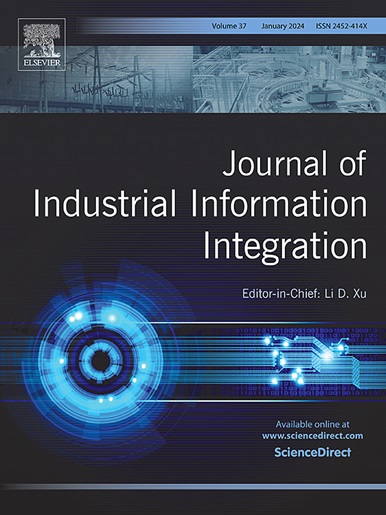Proximal policy optimization with population-based variable neighborhood search algorithm for coordinating photo-etching and acid-etching processes in sustainable storage chip manufacturing
IF 10.4
1区 计算机科学
Q1 COMPUTER SCIENCE, INTERDISCIPLINARY APPLICATIONS
引用次数: 0
Abstract
In the complex process of manufacturing storage chips, the photo-etching and acid-etching stages play a crucial role, significantly affecting energy consumption and environmental impact. This paper introduces a novel Bi-Level Programming Model for Storage Chip Manufacturing (BLPM-SCM) aimed at optimizing the coordination between these two stages. The upper-level model focuses on minimizing the time it takes to complete wafer production, while the lower-level model seeks to reduce the number of acid-etching tanks used, thereby balancing production efficiency with resource utilization. To address the inherent complexity of the bi-level model, we present a hybrid meta-heuristic algorithm that combines Proximal Policy Optimization (PPO) with a Population-based Variable Neighborhood Search (PVNS) method. The PPO-PVNS algorithm enhances the intensification phase by adaptively selecting shaking and local search strategies, while PVNS supports the diversification phase, ensuring comprehensive exploration of the search space through iterative updates of the solution population. Extensive numerical experiments demonstrate the algorithm's superior performance and generalization capabilities in optimizing the manufacturing process. It significantly improves the coordination between the photo-etching and acid-etching stages, achieving dual optimization of energy consumption and environmental benefits. Furthermore, this study provides valuable insights and decision-making tools for industry practitioners, offering innovative solutions for scheduling optimization in the semiconductor sector and promoting more sustainable and efficient production practices.
利用基于群体的可变邻域搜索算法进行近端策略优化,以协调可持续存储芯片制造中的光蚀刻和酸蚀刻工艺
在复杂的存储芯片制造过程中,光蚀刻和酸蚀刻阶段起着至关重要的作用,对能源消耗和环境影响有重大影响。本文介绍了一种新颖的存储芯片制造双层编程模型(BLPM-SCM),旨在优化这两个阶段之间的协调。上层模型的重点是最大限度地缩短完成晶圆生产所需的时间,而下层模型则力求减少酸蚀槽的使用数量,从而在生产效率与资源利用之间取得平衡。为了解决双层模型固有的复杂性,我们提出了一种混合元启发式算法,该算法结合了近端策略优化(PPO)和基于种群的变量邻域搜索(PVNS)方法。PPO-PVNS 算法通过自适应选择摇动和局部搜索策略来加强强化阶段,而 PVNS 则支持多样化阶段,通过迭代更新解群确保对搜索空间的全面探索。广泛的数值实验证明了该算法在优化生产流程方面的卓越性能和泛化能力。它大大改善了光蚀刻和酸蚀刻阶段之间的协调,实现了能耗和环境效益的双重优化。此外,这项研究还为行业从业人员提供了宝贵的见解和决策工具,为半导体行业的排程优化提供了创新解决方案,促进了更可持续和高效的生产实践。
本文章由计算机程序翻译,如有差异,请以英文原文为准。
求助全文
约1分钟内获得全文
求助全文
来源期刊

Journal of Industrial Information Integration
Decision Sciences-Information Systems and Management
CiteScore
22.30
自引率
13.40%
发文量
100
期刊介绍:
The Journal of Industrial Information Integration focuses on the industry's transition towards industrial integration and informatization, covering not only hardware and software but also information integration. It serves as a platform for promoting advances in industrial information integration, addressing challenges, issues, and solutions in an interdisciplinary forum for researchers, practitioners, and policy makers.
The Journal of Industrial Information Integration welcomes papers on foundational, technical, and practical aspects of industrial information integration, emphasizing the complex and cross-disciplinary topics that arise in industrial integration. Techniques from mathematical science, computer science, computer engineering, electrical and electronic engineering, manufacturing engineering, and engineering management are crucial in this context.
 求助内容:
求助内容: 应助结果提醒方式:
应助结果提醒方式:


